#North London builders
Explore tagged Tumblr posts
Text
Transform your house into a dream home with our professional house renovation services. Momi Construction is a trusted home renovation company specialising in comprehensive home remodelling, extensions, and more. Contact us for a free consultation.
#Home Refurbishment Experts#North West London Contractors#Construction and Renovation Services#Garage Conversion Specialists#Quality Craftsmanship#Experienced Builders#Custom Home Design
1 note
·
View note
Text
Top Home Renovations That Add Value to Your Property

Are you looking forward to renovating your home? The first and foremost aspect you need to consider is learning what renovations can add value to your home. Since everyone now wants to get their home’s value elevated, they need to start thinking and talking sense. Before you finally look for good and renowned professionals for house refurbishments in North London, consider choosing the type of renovation your home actually wants. To increase its resale value in the finest manner, you need to do this every time you think of a renovation. Below are some home renovations you should focus on:
Redoing Your Kitchen
The hub of your home is undoubtedly the kitchen. Therefore, functionality should be your top priority. Renovating your kitchen is one of the best choices you can make in your life. This kind of remodelling can be extremely satisfying and entertaining, especially if the space perfectly meets your needs and wants.
Renovating a Bathroom
Keep your bathroom updated to increase your home’s resale value. You should look for sleep surfaces to be incorporated into this renovation to create a sparkling space that helps you clean the overall area easily. Your bathroom is a major selling point for any kind of home.
Creating an Addition
Over time, your family grows. Then why shouldn’t your home grow at the same time? Create an addition to your home’s character to make changes in its resale value. Double your investment capacity for your home and increase square footage. Choose the perfect materials and details to improve your home’s character and value. Your local builders in North London may help you develop a great addition to your home, so quickly get in touch with them.
Get the most ideal home renovations done to ensure a sharp increase in the value of your property. Connect with the best team of renovators now to do the same in the finest and most effective manner.
#House Refurbishments#Local Builders#House Refurbishments North London#Local Builders North London#General Building Contractor#Home Refurbishment#Full House Refurbishment
0 notes
Video
tumblr
Building a dream home is a significant investment, and choosing the right home builder is crucial in achieving your desired outcome. These top home builders in North London are known for their quality services, innovative designs, and commitment to using sustainable and eco-friendly materials.
0 notes
Photo
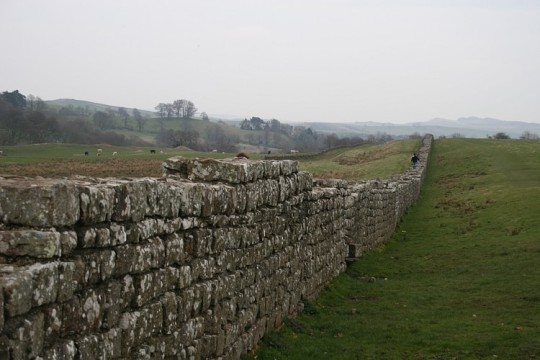
Hadrian's Wall
Hadrian's Wall (known in antiquity as the Vallum Hadriani or the Vallum Aelian) is a defensive frontier work in northern Britain which dates from 122 CE. The wall ran from coast to coast at a length of 73 statute miles (120 km). Though the wall is commonly thought to have been built to mark the boundary line between Britain and Scotland, this is not so; no one knows the actual motivation behind its construction but it does not delineate a boundary between two countries.
While the wall did simply mark the northern boundary of the Roman Empire in Britain at the time, theories regarding the purpose of such a massive building project range from limiting immigration, to controlling smuggling, to keeping the indigenous people at bay north of the wall. The wall continued in use until it was abandoned in the early 5th century CE.
Purpose
The military effectiveness of the wall has been questioned by many scholars over the years owing to its length and the positioning of the fortifications along the route. The argument goes that, had the wall actually been built as a defensive barrier, it would have been constructed differently and at another location. Regarding this, Professors Scarre and Fagan write,
Archaeologists and historians have long debated whether Hadrian's Wall was an effective military barrier…Whatever its military effectiveness, however, it was clearly a powerful symbol of Roman military might. The biographer of Hadrian remarks that the emperor built the wall to separate the Romans from the barbarians. In the same way, the Chinese emperors built the Great Wall to separate China from the barbarous steppe peoples to the north. In both cases, in addition to any military function, the physical barriers served in the eyes of their builders to reinforce the conceptual divide between civilized and noncivilized. They were part of the ideology of empire. (Ancient Civilizations, 313)
This seems to be the best explanation for the underlying motive behind the construction of Hadrian's Wall. The Romans had been dealing with uprisings in Britain since their conquest of the region. Although Rome's first contact with Britain was through Julius Caesar's expeditions there in 55/54 BCE, Rome did not begin any systematic conquest until the year 43 CE under the Emperor Claudius (r. 41-54 CE).
The revolt of Boudicca of the Iceni in 60/61 CE resulted in the massacre of many Roman citizens and the destruction of major cities (among them, Londinium, modern London) and, according to the historian Tacitus (56-117 CE), fully demonstrated the barbaric ways of the Britons to the Roman mind.
Boudicca's forces were defeated at The Battle of Watling Street by General Gaius Suetonius Paulinus in 61 CE. At the Battle of Mons Graupius, in the region which is now Scotland, the Roman General Gnaeus Julius Agricola won a decisive victory over the Caledonians under Calgacus in 83 CE. Both of these engagements, as well as the uprising in the north in 119 CE (suppressed by the Roman governor and general Quintus Pompeius Falco), substantiated that the Romans were up to the task of managing the indigenous people of Britain.
The suggestion that Hadrian's Wall, then, was built to hold back or somehow control the people of the north does not seem as likely as that it was constructed as a show of force. Hadrian's foreign policy was consistently “peace through strength” and the wall would have been an impressive illustration of that principle. In the same way that Julius Caesar built his famous bridge across the Rhine in 55 BCE simply to show that he, and therefore Rome, could go anywhere and do anything, Hadrian perhaps had his wall constructed for precisely the same purpose.
Continue reading...
213 notes
·
View notes
Text

Six Sentence Sunday
thanks for tagging me @run-for-chamo-miles @that-disabled-princess and @orange-peony!
classicstober 2024's prompts have been announced and i'm super excited because it's historical figures! my obsession with Roman non-fiction and biographies has finally paid off!
i thought it would be a good opportunity to jumpstart my writing brain by writing lots of short and snappy things. and so today, i've written 1000 or so words for Regina of South Shields, who i've had the pleasure of visiting!
i'm about to ramble, so i'm putting it under a cut. also warning, i've included photos of a tombstone and a human skeleton. if you just want to read the six sentences and not see them, scroll fast right to the bottom.

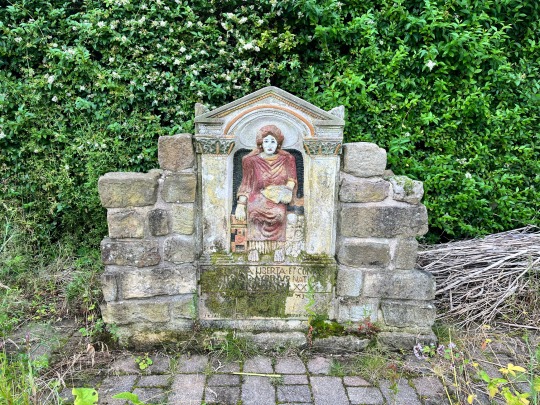
so, this is Regina. or rather, her tombstone, discovered by builders in 1878, and a reconstruction of how it might have looked when it was erected. if you haven't heard of her, which is understandable, she was a British woman from modern day St Albans (near London) during the Roman occupation of Britain. she was sold as a slave (did her family need money? was she born a slave? we don't know) and bought by a man named Barates, from Palmyra, a city in modern day Syria, who was either a soldier or at least travelling with the Roman army. they moved to a garrison close to Hadrian's Wall in what is now South Shields in the north east, and Barates fell in love with Regina. he freed her and they got married.
her tombstone is mostly important because it tells us that a Syrian man was in Britain during this time, and since her tombstone has Palmyrene script on it, and the chances he engraved his own wife's tombstone are slim, there was likely at least one other Syrian person who could engrave headstones around. which suggests that there was a whole group! the name of the Roman fort in South Shields was Arbeia, which could even mean "the place of the arabs."
it's estimated that a third of people in Britain during the Roman occupation were long distance migrants, and most were not slaves, as is often assumed. Ivory Bangle Lady, who I have also visited in York Museum and who lived around the same time, is believed to have come from Africa. and she was a wealthy free woman!
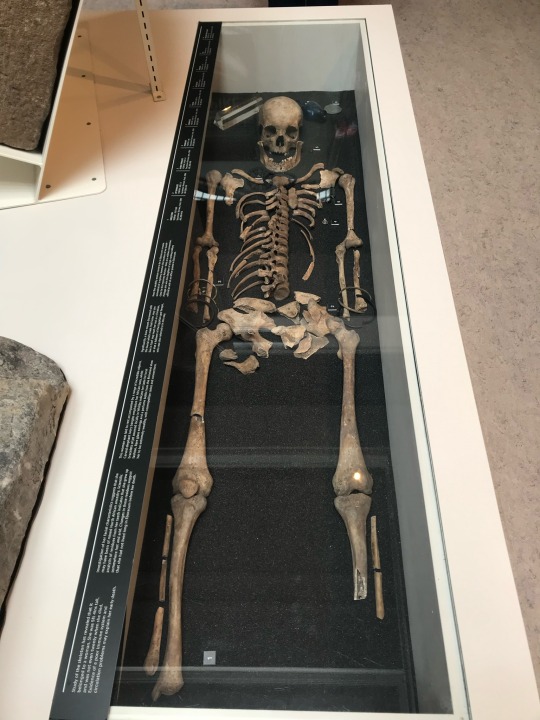
but what about Regina? well, we know she was from the Catuvellauni tribe, and that she died aged 30. we can assume she spun wool as she's depicted doing so on the tombstone, which was a respectable pastime for Roman women, and she's shown wearing lots of jewellery, so she probably led a comfortable life.
but we don't know how she felt about her marriage, as her tombstone is in Barates' words. did she love him back, or was she under duress to marry him to improve her own prospects? did they have children? did she have friends in Arbeia? did she have to learn Aramaic or Latin to communicate with Barates, or did he know Celtic? we simply don't know. so much of her personality has been lost to time.
so my challenge was to write something that pieces together various possibilities to create what could be an approximation of who Regina was. to give her some life, a voice, and at least a bit of agency.
okay. enough preamble. here's six lines:
I had grown and reached my twentieth year, and as the dark circles beneath my eyes disappeared and the warmer months led me to abandon my woollen cloak, I noticed men's behaviour towards me change. I am not the type to play at being coy- I knew they found me attractive. With my white skin, red hair, and pale blue eyes, I was exotic to them. I stood out.
I noticed Barates' behaviour change too. I realised I had a choice to make.
if you want to know more about Regina, my main source is this podcast by Mary Beard, but i also took inspiration from the book Roman Woman by Lindsay Allason-Jones.
tags: @forabeatofadrum @j-nipper-95 @artsyunderstudy @prettygoododds @confused-bi-queer @imagineacoolusername @ic3-que3n @aristocratic-otter @larkral @hushed-chorus @ivelovedhimthroughworse @shemakesmeforget @fatalfangirl @ebbpettier @you-remind-me-of-the-babe @cutestkilla @youarenevertooold @alexalexinii @shrekgogurt @bookish-bogwitch @thewholelemon @supercutedinosaurs @shutup-andletme-go @theearlgreymage @ileadacharmedlife @alleycat0306 @carryonsimoncarryonbaz @comesitintheclover @noblecorgi @roomwithanopenfire and @blackberrysummerblog
28 notes
·
View notes
Text
A walk through Bengal's architecture
Bengali architecture has a long and rich history, fusing indigenous elements from the Indian subcontinent with influences from other areas of the world. Present-day Bengal architecture includes the nation of Bangladesh as well as the Indian states of West Bengal, Tripura, and Assam's Barak Valley. West Bengal’s architecture is an amalgamation of ancient urban architecture, religious architecture, rural vernacular architecture, colonial townhouses and country houses, and modern urban styles. Bengal architecture is the architecture of Wind, Water, and Clay. The Pala Empire (750–1120), which was founded in Bengal and was the final Buddhist imperial force on the Indian subcontinent, saw the apex of ancient Bengali architecture. The majority of donations went to Buddhist stupas, temples, and viharas. Southeast Asian and Tibetan architecture was influenced by Pala architecture. The Grand Vihara of Somapura, which is now a UNESCO World Heritage Site, was the most well-known structure erected by the Pala rulers.

The Grand Vihara of Somapura
According to historians, the builders of Angkor Wat in Cambodia may have taken inspiration from Somapura. Bengal architecture became known for its use of terracotta due to the scarcity of stone in the area. Clay from the Bengal Delta was used to make bricks.
The temple architecture has distinct features like the rich wall decoration, often known as the terracotta temples, which was one of the remarkable elements of Bengali temple architecture. The double-roofed architecture of thatched huts was replicated by Bengali temples. Square platforms were used to construct the temples. Burnt brick panels with figures in geometric patterns or substantial sculptural compositions served as the temples' adornment.

Dochala style
These served as models for many temples that were built in undivided Bengal. Construction materials used in ancient times included wood and bamboo. Bengal has alluvial soil, so there isn't a lot of stone there. The bricks that were utilized to build the architectural components were made from stone, wood, black salt, and granite. Bengal has two different types of temples: the Rekha type, which is smooth or ridged curvilinear, and the Bhadra form, which has horizontal tiers that gradually get smaller and is made up of the amalaka sila. Mughal architecture, including forts, havelis, gardens, caravanserais, hammams, and fountains, spread throughout the area during the Mughal era in Bengal. Mosques built by the Mughals in Bengal also took on a distinctive regional look. The two major centers of Mughal architecture were Dhaka and Murshidabad. The do-chala roof custom from North India was imitated by the Mughals.

Jorasako thakurbari
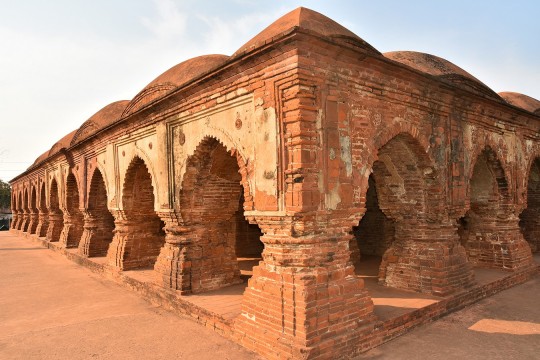
The Rasmancha is a heritage building located at Bishnupur, Bankura district, West Bengal.
Influence of the world on Bengal architecture: Although the Indo-Saracenic architectural style predominated in the area, Neo-Classical buildings from Europe were also present, particularly in or close to trading centers. While the majority of country estates had a stately country house, Calcutta, Dacca, Panam, and Chittagong all had extensive 19th and early 20th-century urban architecture that was equivalent to that of London, Sydney, or other British Empire towns. Calcutta experienced the onset of art deco in the 1930s. Indo-Saracenic architecture can be seen in Ahsan Manzil and Curzon Hall in Dhaka, Chittagong Court Building in Chittagong, and Hazarduari Palace in Murshidabad.

Hazarduari Palace in Murshidabad
The Victoria Memorial in Kolkata, designed by Vincent Esch also has Indo-Saracenic features, possibly inspired by the Taj Mahal. Additionally, Kolkata's bungalows, which are being demolished to make way for high-rise structures, have elements of art deco. The 1950s in Chittagong saw a continuation of Art Deco influences. The Bengali modernist movement, spearheaded by Muzharul Islam, was centered in East Pakistan. In the 1960s, many well-known international architects, such as Louis Kahn, Richard Neutra, Stanley Tigerman, Paul Rudolph, Robert Boughey, and Konstantinos Doxiadis, worked in the area.

The Jatiyo Sangshad Bhaban
This iconic piece of contemporary Bangladeshi architecture, was created by Louis Kahn. Midsized skyscrapers dominate the cityscapes of contemporary Bengali cities, which are frequently referred to as "concrete jungles." With well-known architects like Rafiq Azam, architecture services play a key role in the urban economies of the area. Overall Bengal architecture was influenced by various contemporaries of their time and continues to evolve.

Gothic architectural style seen in St. Paul's Cathedral in Kolkata.

Zamindar era buildings in ruin.

Belur Math in Howrah
#bengali#bangla#west bengal#bangladesh#tripura#assam#desi#বাংলা#india#architecture#tales#bengal architecture#history#kolkata#international#technology#information#temple#asia#bricks
184 notes
·
View notes
Text
Fics Written In 2024 (so far) Masterlist
Buffy Movie Nights are Life Changing (ao3) - angelicsam
Summary: Things get steamy between Dan and Phil during their nighttime Buffy streaming session in 2010; featuring a confident yet bashful Phil and a shy Dan who learns how to drive Phil crazy.
Burning Bibles (ao3) - cherryheartz
Summary: phil lester loved curly headed boys with tattoos on their arms and a joint made with torn bible pages between their soft lips.
and dan howell was exactly that.
Comfort in Chaos (ao3) - Anonymous
Summary: Phil wakes to Dan having a nightmare that he struggles to rouse him from. It later transpires that there is a reason behind his unsettled and panicked behaviour.
everything has changed (ao3) - gamingbeats
Summary: Dan and Phil go on holiday to NYC and everything changes when Dan books only the couple's options.
False God (ao3) - ForeverJustAnEmoKidAtHeart
Summary: After a stupid fight, Dan has been in the office editing the Easter Baking video for the entire afternoon. He specifically told Phil not to disturb him but was amazed (and worried) that Phil didn't.
home renovations (ao3) - possumdnp
Summary: Phil is a new homeowner with a knack for getting himself into awkward situations around cute guys. Dan is a builder who's always working on renovations around Phil's house. What could go wrong?
(An alternate meeting YouTuber Phil/builder Dan AU.)
just a little bit closer (ao3) - possumdnp
Summary: Dan and Phil have a deep conversation, leading to them trying something new together.
(Set during the week Dan spent up north at Phil's house in December 2009.)
Like a Bowl of Oranges (ao3) - cloej88
Summary: Dan has built a solid career for himself as a ghostwriter. He safely hides behind other people’s words, crafting their tales and pocketing the cash without any threat of notoriety. But lately he has been working on a book of his own, itching for a change.
Phil is an indie filmmaker who happened into some huge breaks over the last few years. He wants to use his influence to uplift queer stories for the screen, so he puts out an open call for story submissions. At his agent’s behest, Dan submits his story.
The writer!Dan and director!Phil friends/co-workers to lovers AU that we never knew we needed.
Like a cicada rhythm. (ao3) - emmibug
Summary: every night they share the same bed, legs twisted together, arms holding each other close. dan and phil haven’t grown up from their childlike sense of friendship which leads people to believe there’s something deeper going on.
a dan and phil childhood best friends to lovers AU where they share the same bed and always have done.
Phlonde (ao3) - yikesola
Summary: Phil has to admit though, stood here in the familiar shop aisles of cheap box dyes, the blonde box is calling to him. A fic about change and control.
phlondes do it better (ao3) - wearealldoomed
Summary: The day has come around quicker than Phil had anticipated.
The day where Phil dips his toes back into the waters of dyeing his hair after months of letting his natural hair colour grow back through.
The day where Phil goes platinum blonde without confronting Dan about it first.
sativa (i said im ready) (ao3) - catbearbunz (bunnieovadamoon)
Summary: it’s 2009, and phil really wishes dan would call. he does, but he comes greener than expected.
aka they get drunk and high and have esex.
Slut Era (ao3) - Bandom_Squirrel
Summary: Dan worries that he’s bad at being slutty. Phil is Phil.
snowballs (ao3) - calvinahobbes
Summary: your mum is trying to get me drunk
so american (ao3) - ae121
Summary: Phil has been living in London for a year and thinks he's gotten pretty used to the city. He works part-time at a bookstore, using it at first to gain some friends, now it's just fun for him. His friends are constantly trying to find him someone to date, but all of his dates don't go well. Well, that's until he met Dan.
so I will share this room with you (ao3) - jonsaremembers
Summary: Phil hadn't meant to end up here.
an exploration of the aftermath of meeting your soulmate when you're still so impossibly young; title from "And So It Goes" by Billy Joel
The Stress, The Glory and The Afterglow (ao3) - easybubby
Summary: It's 2024. Dan and Phil are overworked and slipping into old habits. The only difference between now and 10 years ago is that their relationship now comes first and they will do anything to protect it, even if they have to spend time apart. They treasure one wild night before they vow to keep their distance for a while.
Thou shalt be punished. (ao3) - firephan311
Summary: The sequence of events following the live stream on dan's birthday. Dan's wrist injury seen in the sims video after the live stream inspired me to write this. sister danielx father philip. very smutty. very detailed. Bit of fluff at the end.
To be loved (ao3) - Thedemonqueen
Summary: Dan knows Phil insisted they’re together. Dan knows Phil loves him. But it doesn’t stop Dan from feeling dirty when he wants to touch Phil.
Vampire Moon (ao3) - natigail
Summary: Phil knew it was foolish to stay out late on the night of a full moon. It was even more foolish to agree to take a walk with Dan who was never up do any good. But Phil couldn't admit to himself that he had a blind spot concerning the vampire, and now he was going to pay for that.
*Phil said: “Oh! Is this a self-insert fic? I was called hamster boy at school. I wanted to be Oz. Bite me, granddaddy.” And I said: Bet.*
you and me (that's all we need it to be) (ao3) - bunnyslipper
Summary: 🧡
35 notes
·
View notes
Text
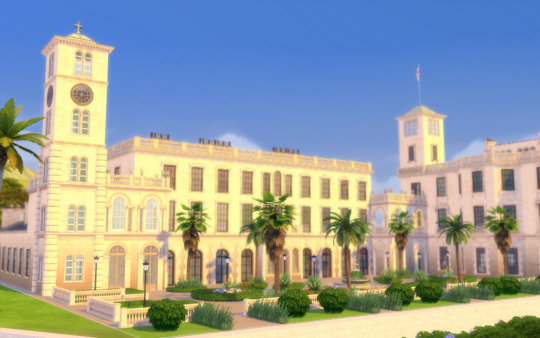
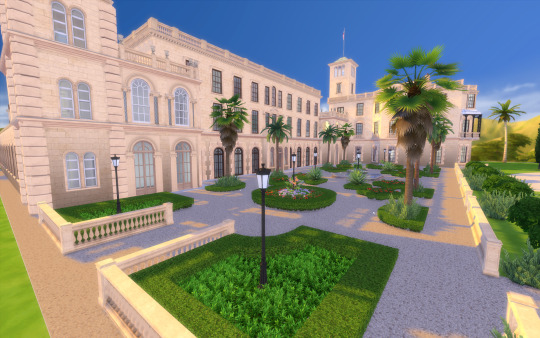
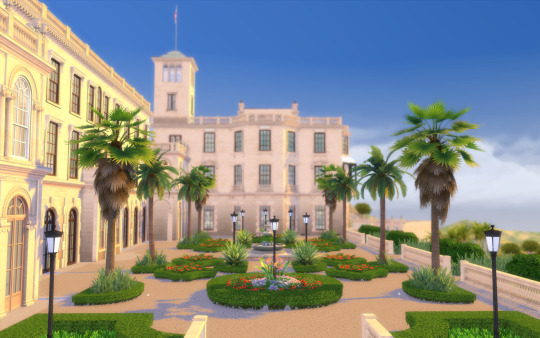

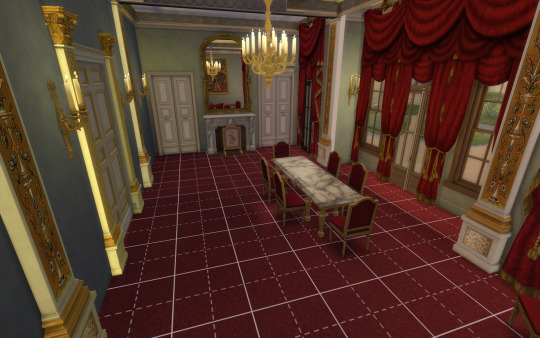
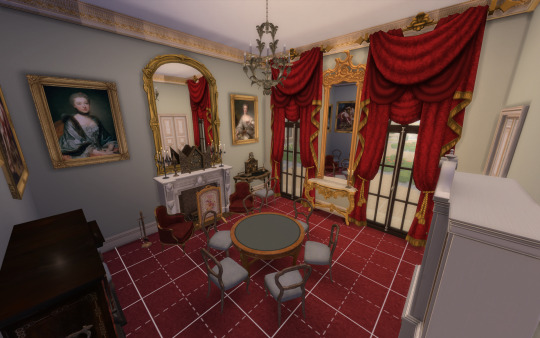
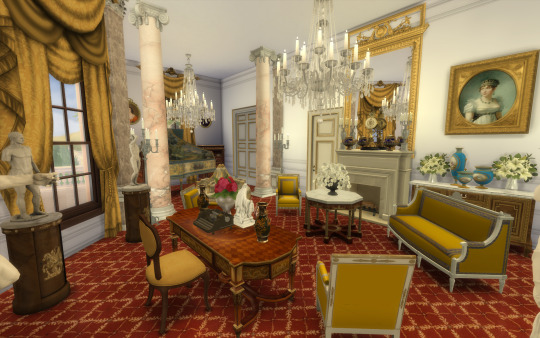
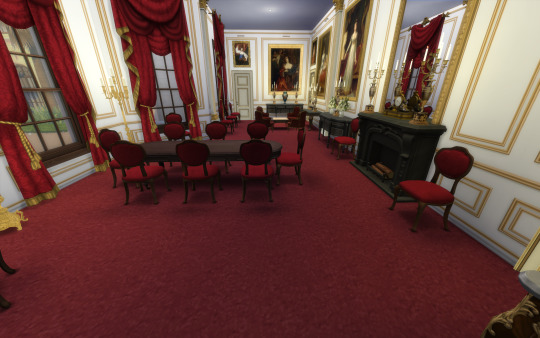
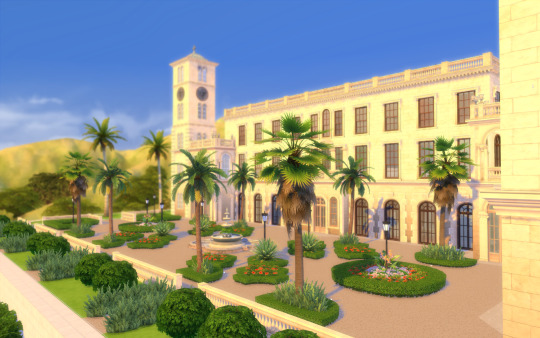
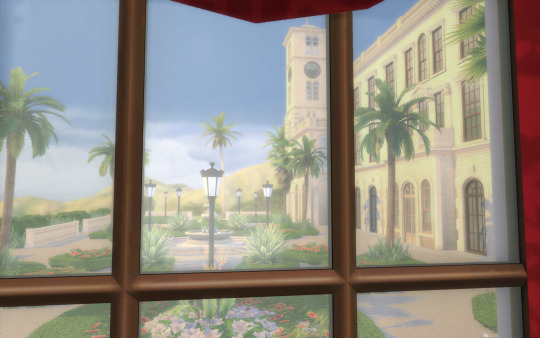
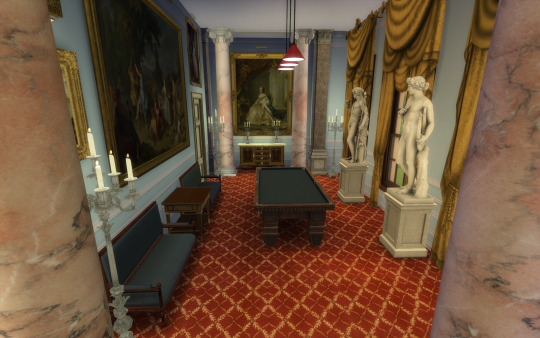
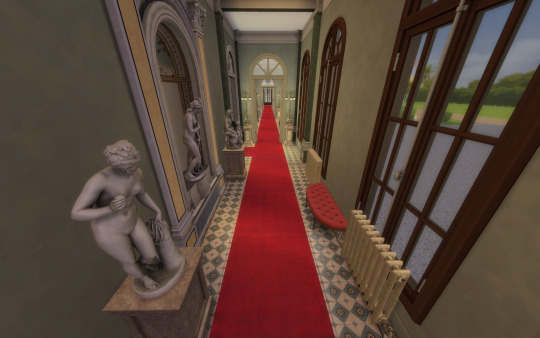
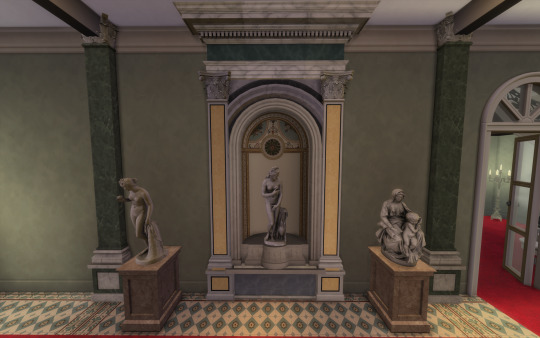
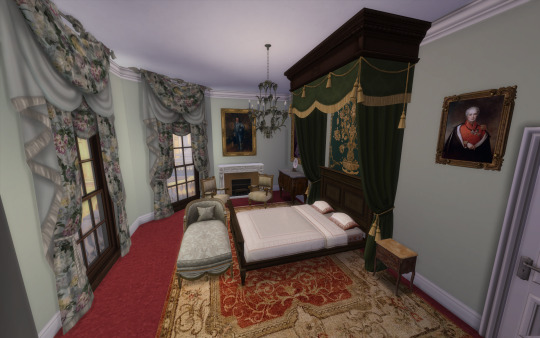
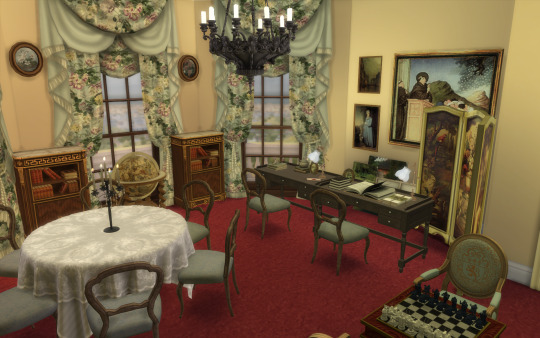
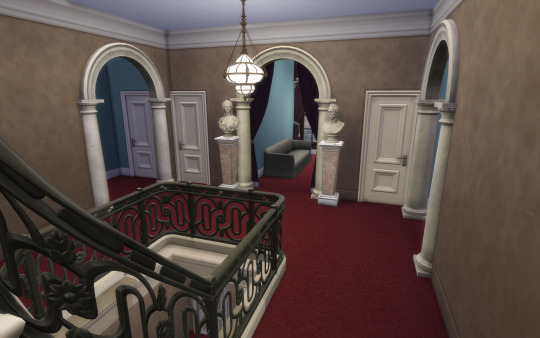
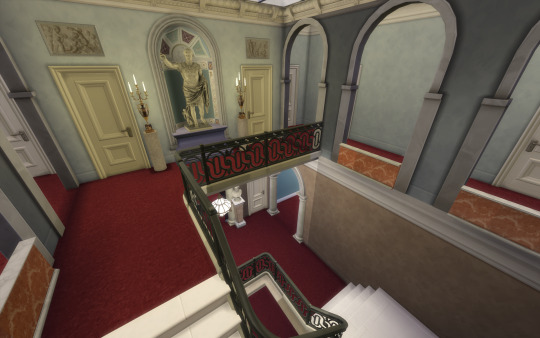

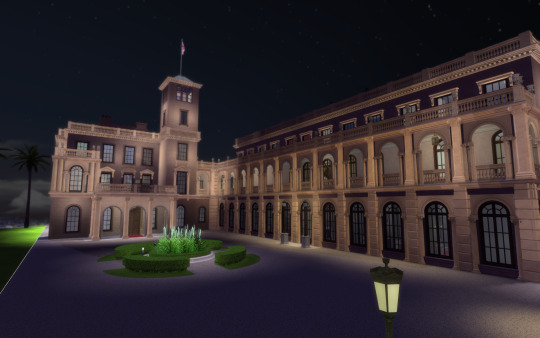

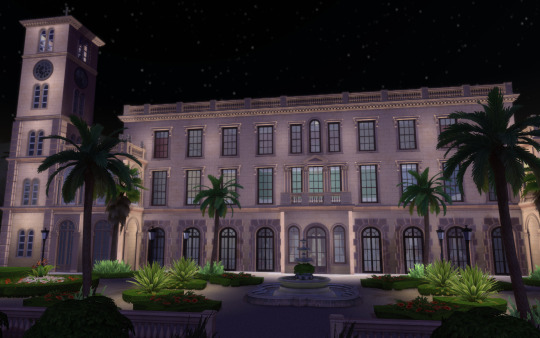
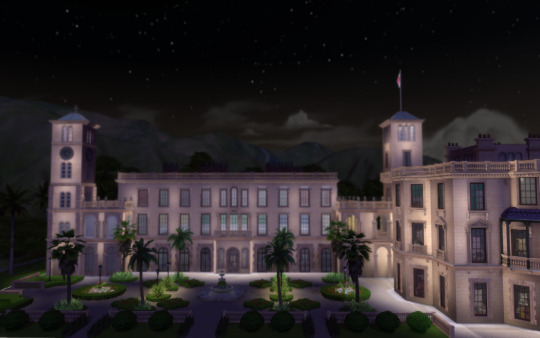
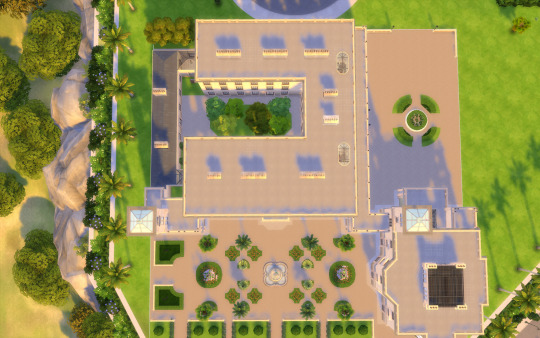

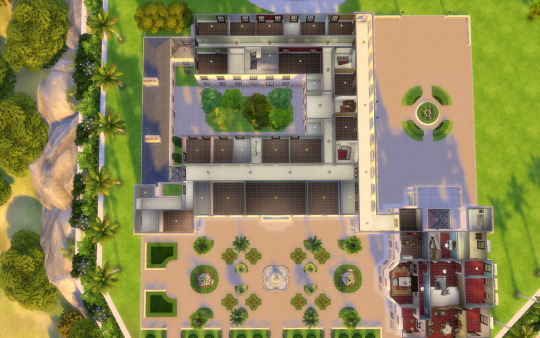
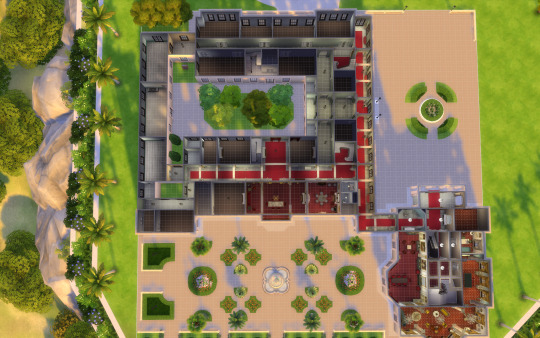
Osborne House
Hace un instante
Hi guys!!
I'm sharing Osborne House . This is the 11th building for my English Collection.
This was also a request from one of my patreons, so I hope it does not desapoint.
History of the house: In 1843 Queen Victoria and Prince Albert were looking for a seaside retreat for their growing family to escape the pressures of London and Windsor. The Osborne estate, then owned by Lady Isabella Blachford, was recommended to them by the Prime Minister, Sir Robert Peel (1788–1850).
The estate was initially leased, then bought in May 1845 for £28,000. As the existing house was too small, an extension was required. Queen Victoria and Prince Albert did not want to be restricted by the Department of Woods and Forests, which was then in charge of all government building, so Prince Albert bypassed the department’s architects. Instead he commissioned Thomas Cubitt (1788–1855), the master builder and developer of much of the Duke of Westminster’s Belgravia estate in London, to advise him.
Cubitt recommended that rather than alter the old house it would be best to build a new one, and proceeded to design it in collaboration with Prince Albert.
OSBORNE TAKES SHAPE
The first phase of building was completed in 1846 with the Pavilion, housing the private rooms of Queen Victoria and Prince Albert and the royal nurseries. The household wing, containing accommodation for members of the royal household who accompanied Queen Victoria to Osborne, was completed in 1848.
After the old house was demolished in 1848, the main wing, completed in 1851, was built on its site, and was linked by a long corridor to the household wing. The main wing was used initially by the royal children. The terraces on the north-east side of the Pavilion and main wing were designed to complement the house and are filled with the signature features of classical Italian gardens.
Neighbouring Barton Manor was thoroughly ‘restored’ by Cubitt and its outbuildings were organised as a model farm. Other building projects included estate cottages and lodges, a dormitory for male servants, and a landing house for the coastguard, with a sea wall along the coastal edge of the estate.
For more info: https://www.english-heritage.org.uk/visit/places/osborne/history-and-stories/history/#:~:text=Queen%20Victoria%20and%20Prince%20Albert,after%20Albert's%20death%20in%201861.
------------------------------------------------------------------------------
This house fits a 64x64 lot and was downsized to fit, so it lost some of its glamour.
It is not furnished except for the state rooms and some private bedrooms (for pictures and reference), as it was requested for that purpose.
Hope you like it.
You will need the usual CC I use:
all Felixandre cc
all The Jim,
SYB
Anachrosims
Regal Sims
King Falcon railing
The Golden Sanctuary
Cliffou
Dndr recolors
Harrie cc
Tuds
Lili's palace cc
Complete list of CC: https://docs.google.com/spreadsheets/d/1ybrxiDhssT3B_4My4KMjm0xNyMDkJ1kNafobQIEJLzQ/edit?usp=sharing
Please enjoy, comment if you like it and share pictures with me if you use my creations!
Early access (public release Sept-30)
Download: https://www.patreon.com/posts/105201540
#sims 4 architecture#sims 4 build#sims4#sims 4 screenshots#sims4play#sims 4 historical#sims4building#sims4palace#sims 4 royalty#ts4#ts4 download#ts4 simblr#ts4 gameplay#ts4 legacy#ts4cc#the sims 4#the sims community#simblr#sims 4#the sims#sims
42 notes
·
View notes
Text






On October 17th 1850 James Young obtained the patent for the extraction of paraffin from shale.
The following year the world's first commercial oil refinery followed opened.The chemist-cum-businessman James Young, later known as "Paraffin" Young, opened a works near Bathgate that produced lubricating oils and naphtha (for use as a cleaning solvent) from the shale found among West Lothian's coal deposits.
Soon he developed technologies that produced paraffin for lights – Bathgate oil lit a quarter of London's lamps – and paraffin wax for candles. In the 1860s, when many of Young's patents expired, Scotland became gripped by oil mania as dozens of hastily established companies dug pits and erected retorts and refineries in a small stretch of countryside to the south of the Forth.
During its first boom, the shale oil industry employed more than 30,000 people, many of them migrants from elsewhere in Britain. Existing villages grew at a rate bewildering to those who lived in them – Broxburn's population went from 660 to 5,898 in 30 years – while entirely new settlements of brick cottages, with perhaps a store or a working men's institute at their centre, appeared suddenly where no one had previously thought to live. By the 1910's West Lothian shale produced 27.5m barrels of crude oil, which was roughly 2% of then world production.
As the 20th century progressed oil from the Persian gulf became more abundant and cheaper to produce, the second world war and oil shortages prolonged the shale business but the writing was on the wall. The last shale mine closed in 1962, and then it was gone. The pitheads, the retorts, the refineries and the narrow-gauge electric railway that connected them: all vanished, leaving the spoil heaps, the bings, as the most visible evidence that industry had ever existed.
Just north of my home town of Loanhead lays Straiton, not retail parks and most famous for the large Ikea there, but back in the day it was part of the shale works that stretched across the Lothians, all that is left of the Straiton Oil Company are a row of cottages, the head office was in a building that eventually was converted into a pub, The Callyr Inn, sadly the people that bought it years after it closed let it rot, deliberately making it so unsafe that it was pulled down to be replaced by more warehouse type units.
Two of the bings remain, Greendyke and Five Sisters, as industrial monuments protected in law against excavation and reshaping by road builders who want their red waste as hardcore. Whether you love them or hate them the bings are there to stay, as a reminder to a once thriving mining industry around the lothians,, my fave is Greendyke, if you like a good walk, apparently they call it Bing Bashing, it offers great views, you can see the Ochils to the north and the Pentlands to the south, the strange cone of North Berwick Law away to the east and it's possible to make out the shape of Ben Lomond to west, on a clear day. Edinburgh Castle and the Forth bridges are easily picked out and if you walk to the northern edge,you can look down on Niddry Castle, a 15th-century keep where Mary Queen of Scots once spent a night.
There's loads of history, first is the official Shale Oil Museum webpage, promoting the museum itself, it will take you weeks to get through everything here https://www.scottishshale.co.uk/index.html
Pics are James "Parafin" Young, some old pics of the industrialisation, an old Farm eaten up by the plants and pics of the Greendyke bing, with Niddry Castle and Five Sisters Bing from the air
11 notes
·
View notes
Text
The Concept of Family in British locomotives
Let's talk about the family concept in British locomotives. This concept has changed through the history of railways in Britain, so we will be primarily focusing on the North Western Railway's Flagship Express Locomotive, No.4 Gordon, once we reach the 20th century.
In the early days of steam, all Locomotives were cousins, as there were so few, but as their numbers grew, locomotives began to associate locomotives sharing the same builder as kin, and the concept of all locomotives being related would slowly fade. The concept of classes of steam locomotives was at best primitive at the time, as technology progressed with such speed that oftentimes an engine was outdated before construction was completed. All engines of the same builder were seen as cousins or ancestors. Siblings were a rare concept at the time, reserved for unusually close engine pairs
As the form and technology of the steam locomotives settled into established forms, classes began to appear with greater frequency. Batches of engines began to appear built to the same design. Built alongside each other, these engines quickly were recognized as siblings and often had close relationships. Complimenting the existing cousins of the same builders.
By this time Railways were growing (and absorbing each other) rapidly. The idea of all engines of a railway being family fell to the wayside quietly on the larger lines, with fleetmates instead being seen as team members.
It was into the end of this era that Great Northern Railway No.100 was first steamed. One of the first Pacifics to be built in the British Isles (and the first successful standard gauge one). No.100 Gordon was the testbed for Sir Nigel Gresley's next-generation express locomotive. As an experimental express testbed, he represented the vision and hope for the future of the railway and was held in high esteem by the other engines on the railway. His high-performance levels only increased his status. However, this status came with the fact. While amicable with the existing express 4-4-2s and 4-6-0s, they were hardly family. While Gresley had designed other locomotives, they were either shunters, freight engines, or smaller mixed traffic designs, and as such rarely crossed paths with their younger cousin. This would change in 1922 with the introduction of No.1470, Great Northern.
Great Northern was the result of Gordon's testing, the first production pacific on the GNR (or Britain). Finally, Gordon had a sibling. Gordon was quickly found to be protective of his little brother, determined that they would never know the loneliness he felt. They were soon joined by No.1471 Sir Fredrick Branbury before the event that shook their world. Grouping arrived with the dawn of 1923.
Grouping saw the railways of the British mainland organized into 4 new railways. The London Midland and Scotland Railway, the Great Western Railway, the Southern Railway, and the A1s new home: The London North Eastern Railway. Seemingly overnight the idea of the railway being your family would be struck down for the majority of lines in Britain, as those railways suddenly no longer existed. Each of the "big four" fleets responded differently. The LMS largely let the concept lie, indifferent to how their locomotives saw each other as long as they performed to expectations.
The Great Western aggressively pushed the concept of The Great Western Way, and the idea they were all "Great Western." Decades later in the 1980s, the surviving pre-grouping locos would adopt a TV line to describe the experience with the phrase, "Resistance is futile, you will be Swindonized."
The Southern came together as a team out of sheer necessity to keep the railway running, but the pre-grouping locomotives would never quite see each other (or the Southern-built engines) as family. Teammates for certain, but the majority still identified themselves by their pre-grouping line.
The LNER closed ranks under the leadership of their express engines. The A1s, including the newly built 1472. found themselves suddenly sharing sheds alongside the Raven-designed Rival A2 pacifics, City of Newcastle and City of Kingston upon Hull. Many expected the two classes to clash, but when No.2400 and 2401 pulled into the sheds, No.100 saw the same weight and loneliness he had borne before his sibling's construction. Before any of the others in the shed could speak Gordon firmly welcomed the former NER engines as cousins. This precedent would be followed by the other express classes, eventually spreading throughout the LNER. In the end, the Gresley A1 would be chosen as the LNER's flagship express engine, but 8 more A2s were built, 2402-2409. No.2402-2404 had begun construction prior to grouping, but 2405-2409 were authorized by Gresley himself. Why he did this is uncertain, but it noted that No.100 had visited Doncaster for unscheduled maintenance the day before the decision was made.
However, No.100 was not destined to remain with the newly formed LNER. By August of 1923 the 10th A1, No. 1480 Enterprise had been completed at Doncaster Works. The LNER board decided that No.100 was no longer needed, preferring to replace the non-standard prototype with a production A1. Gresley argued it would be cheaper to bring No.100 in line with the production A1s, but the board wished for Great Northern to be seen as the first A1, no prototypes required, and No. 100's existence interfered with that.
Fortunately, Gresley convinced the board to sell Gordon to a Railway that desperately needed him. LNER No.100 left Doncaster and his eleven siblings in August 1923, bound for the North Western Railway.
The North Western Railway had been formed in 1915 from the existing standard gauge railways on the Island of Sodor off the coast of Barrow in Furness. The mainline had connected the western coast of Sodor to the British mainland by rail to facilitate the movement of troops and supplies during the Great War. Following the war, the island had seen a massive industrial boom with rising population levels to match. The railway's fleet was primarily composed of pre-1900 castoffs and former Railway Operating Division locomotives. None of which were suitable for the Express service between the western terminus of Tidmouth and Barrow in Furness. One may be excused for wondering why the problems of a western island railway would bear any attention from the London North Eastern Railway. The answer, as is so often true in railway politics, is spite.
In 1923 the North Western Railway had, through a combination of politics, bribes, and actions of questionable legality, managed to remain independent, much to the ire of the London Midland and Scotland Railway. The LMS, already the LNER's sworn rival, had made it their mission to absorb the NWR by any means necessary, as they felt cheated by the line's exclusion from the Grouping Act of 1923.
The LNER saw an opportunity to screw over the LMS with the sale of No.100 to the NWR. With the acquisition of the Gresley Pacific, the North Western could then manage a competitive timetable with its express without doubleheading. Gordon was checked over at Doncaster Works, painted in an express variation of North Western Passenger Blue, and sent off to the NWR with a line of older express coaches that had also been purchased.
Gresley himself turned Gordon over to the NWR, but not before telling the newly renumbered number 4 to make him proud.
The former No.100's early days on the NWR were a success from a performance standpoint, but not a social one. This point in the NWR's mainline fleet, as with many sheds following grouping, was perhaps most comparable to a pack of feral hounds fighting over a bone. Half the fleet were engines purchased during the war, older designs desperate to prove their worth to avoid the fate of their siblings on the mainland. The other half were newer, stronger, engines loaned on trial just before grouping, which saw themselves as inherently better than the rest. They believed the NWR should purchase them before they were returned to the LMS the following year and scrap the older engines. Each engine was fighting to prove themselves, especially at the cost of their competitors.
Throwing a top-of-the-line LNER Pacific into the mix only inflamed tensions. The wartime engines saw him as their worst fears confirmed, the railway purchasing new engines to replace them. The loaned engines loathed him not only for actually being everything they saw themselves as, but also for being LNER, suggesting the North Western may turn to the LNER for new motive power rather than the LMS. Gordon, stripped of his home and his siblings, was in no mood to manage either group's fears or egos.
It is impossible to guess how much longer this state of affairs may have went on for had it not been for the NWR's No.3. No.3 "Henry" was the North Western's previous attempt at purchasing a suitable express locomotive. A 4-6-2 built from stolen Gresley plans, Henry had been a poor steamer, and had struggled with the lesser Expresses, and was utterly incapable of pulling the flagship Wil'Nor'Wester. It had all come to a head two weeks after Gordon had arrived when the pacific had stopped in a tunnel during a storm and refused to come out, resulting in the Railway's general manager, the future Sir Topham Hatt, lifting the rails and bricking the tunnel entrance. Gordon, used to Gresley's high standards for express engines, initially held little sympathy for the confined engine, and even less hesitation in letting said engine know his opinion as he shot past. However as time passed, and Gordon's loneliness grew, he could help but see his siblings in No.3's place. Finally, in late 1923, Gordon took charge of the mainline fleet. He had developed a working (if reluctant) respect for the oldest engine in the shed, a 4-4-0 of Furness origins, and together the two created a plan to save the imprisoned locomotive. One night in late autumn, the first of many "indignation meetings" on the NWR was held as Gordon faced the other engines and told them in no uncertain terms that they would be saving their fleetmate.
The plan went flawlessly. Gordon "failed" outside the tunnel and Henry was pulled out to save the train. While it was revealed that STH had known about the plan, it was still considered a success by Gordon and the majority mainline fleet. However, there was a side effect Gordon hadn't seen coming.
Gordon had expected for the engines to execute the plan, then return to fighting each other. Instead, they unified behind the flagship pacific. Whilst several engines (mostly the newer loaners) would try to challenge him for leadership, they quickly found there was no competing with the Gresley. In performance, he was both the fastest and strongest engine on the railway, as the railway's flagship engine he held the favor of the board and STH, and his willingness to damage his own performance to save another engine had earned him the fleet's loyalty.
Slowly, reluctantly, the No.4 came to see the North Western fleet as family. First came No.3, Gresley in design if not name (or performance) he was the closest Gordon had to a sibling. The old 4-4-0 (No.2 Edward) would earn the Pacific's grudging respect by his work ethic. The following year an experimental mogul from the LMS would arrive (No.5 James) which would quickly become the annoying sibling No.4 never wanted. Throughout all of this, Gordon would occasionally encounter his siblings. It became a tradition for any new LNER express locomotive to make the run to meet Gordon on the NWR, so he would eventually meet all 79 of his siblings, and many of his cousins.
From 1925 to 1939, Gordon led the NWR in his battle for survival and independence in the world of the big four, but by 1939 his conjugated valve gear was worn and fouling. Many expected Gordon to be sent to Doncaster to be rebuilt to A3 standards like many of his siblings. Instead, STH called in a favor with the LMS's chief mechanical engineer, William Stanier. Gordon arrived in Crewe Works stoic and dignified, expecting to be treated as the enemy by the LMS Pacifics and 4-6-0s. Instead. He received a hero's welcome.
While the two companies were rivals, Gresley and Stanier knew each other, and CMEs were often known to discreetly share ideas and progress. Gordon was Britain's first (successful) pacific, and the Princess Royals and the new Princess Coronations saw him as their predecessor. Furthermore, No.3 had been previously rebuilt at Crewe into Black 5 4-6-0 following a 1935 accident, so as Henry's adopted sibling, he was considered their cousin at least. His Gresley origins could be easily ignored, he'd be a Stanier engine soon enough. For the first time, Gordon was exposed to the idea that not just LNER Pacifics, but all British Pacifics, were his family.
Then war broke out. Gordon had been scheduled for testing on the LMS following his overhaul, but instead his overhaul, but instead the Crewe workmen worked day and night to expedite his return to Sodor. On his final night on LMS metals, Gordon embraced his position as the eldest pacific in Britain for the first time. He spoke to a gathering of the premier express locomotives of the big four at London's King's Cross Station. They were no longer four railways, rivaling each other, he said, but one country standing against a common foe. Gordon departed King's Cross in the dead of night, pulling a long line of coaches filled with evacuating children.
The war on the North Western saw Gordon switch over fully to goods work for the first time in his life. With travel discouraged except in emergency, the express could be handled by smaller engines, leaving the power of the newly rebuilt express engine free for war traffic.
The binds between the NWR fleet were reforged again in steel as the railways of Britain pulled together for the war. Sodor possessed multiple ports, and these were desperately needed safe havens in the uboat-infested waters of the Atlantic. Through it all Gordon led the North Western with a firm hand, pushing all to work their hardest, but keeping overzealous engines and men from pushing his fleet mates too far. Sodor fared better than the mainland, but even this western island was not exempt from the horrors of the blitz. An image of Gordon pulling a line of flatbeds lined with tanks and artillery through Tidmouth the morning after the Blitz strike which decimated the city would become famous as a sign of both Sudrian and British resolve.
The end of the war saw Gordon return to passenger service, returning troops from the mainland to Sodor. The morning he finally returned to head the Wil'Nor Western, freshly repainted in NWR Express Passenger blue, was greeted with cheers and fanfare along the line. The war was over, but its effects were not.
On January 1st, 1948, the standard gauge railways of Britain were nationalized. The big four no longer existed, instead, there was one giant railway with four major regions...in theory. In reality, it was far more difficult to join four rival railways together than signing legislation. It was one thing for the railways to put aside their differences for the good of their country, that was quite simply an engine's duty. It was another to tell the engines and their crews that their rivals of nearly three decades were now their fleet mates. The early days of British Rails were strange indeed. While many had gained a professional respect for their peers during the war, for many engines, their railway was as integral to their identity (and the identity of other locomotives) as being British was to their crews. This was exasperated by the fact that many sheds were led by their express engines, who were built and run in direct and often intense competition with their rivals. The arrival of new locomotives which had only served under British Railways further complicated the already complex situation.
It was into this situation that Gordon would return to the Mainland in 1949. As the unofficial fifth region, the North Western had largely been ignored by British Railways, as there were enough problems managing the former big four without creating the headaches dealing with the Sudrians always invoked. Nonetheless, the North Western Region was invited to send a locomotive for the 1949 Exchange Trials. The trials were meant to directly compare the mainline locomotives in service with the newly nationalized Railway, which did absolutely nothing to dissipate the former rivalries. Gordon was the first and only, choice to represent the North Western Region. Gordon thrived in the trials. His rebuild may have lowered his top speed, but his greater power allowed him to accelerate his trains faster, even up hills. He would routinely match or exceed his Big Four peers in timings. During this time he ran expresses and fast freights alongside many of his cousins and siblings from the LNER, as well as his adopted LMS relatives. He would also develop a rivalry with the Great Western 4-6-0s at this time, as they were the only ones who could challenge him on the hills. British Railways were impressed with his performance, and many of his design elements would be translated into the future Standard 7 class Britannia. It was during this time that he would meet No.34090, Sir Eustace Missenden. She was a Battle of Britain class Light Pacific of Southern Design. Newly built, the young pacific struggled with passenger work. Young and excitable, she worked well with trucks but was deemed too flighty for express work. No one but No.4 himself knows exactly what about her caught his attention, but perhaps she reminded him of his younger siblings. In any case, the first pacific took the youngest under his wing, requesting the management arrange for them to double-head several expresses.
The southern region's management was far from stupid, and eagerly arranged for the two to work together so that she could be mentored by him. Gordon was a stern but knowledgeable teacher, and 34090 was eager to learn. By the time No.4 left for the next set of trials, 34090 was considered one of her shed's best Express engines, and although it would be years before he admitted it, Gordon had a new youngest sibling, Rebecca.
Gordon would return to the Island of Sodor after the trials, and with him came the attention of British Railways. The two organizations began circling each other, but that mattered little to Gordon, his job remained the same. With the exception of an incident in 51, Gordon's existence would remain the same as always, hauling the express and occasional freights. That would all change in 1955.
The Modernization Plan of 1955. The plan to scrap all steam locomotives on British Railways in favor of diesel locomotives. Up to this point, the North Western Region and British Rails had been trying to play nice with each other. British Railways was established with the sole purpose of bringing all standard gauge lines in Britain under one ruling body. Sodor had a history of nodding their heads whenever 'foreigners' gave them orders, then ignoring said orders. Relations between BR and their fifth region had always been strained at best. The announcement of the Modernization Plan brought on a full-on cold war. Sodor was a safe haven for steam and would remain so, even if they had to cut ties with the mainland to do it.
The North Western Region was in a fight for its very existence, and Gordon was at the head. As their Flagship express engine, Gordon was the image of the North Western to many. Every time British Rails sent a diesel for the NWR to test, Gordon would shatter their timings, proving the NWR could not only keep up with BR while using steam but beat them. As the Hatts took the political fight to London, Gordon joined a very different fight.
Sodor had long been a place where engines could escape scrap, but now there were far, far more in need. Gordon's strength and power were needed more than ever. In most cases, the mighty pacific would never see the engines snuck into the rear of his Night Express, but he always felt their weight. When the last day of steam came in BR, Gordon had never once been late with the midnight express to Tidmouth in the thirteen years since the modernization plan was announced. Even when he did see his charges, it mattered not where they came from, they were all steam engines, and they were all under threat. Even when Gordon received work of the final A3s scrapping, leaving only Flying Scotsman and himself of a class once 80 strong, he did not falter. In the latter years of steam, he faced a challenge of another type, diesels, the very engines his kind were being scrapped for, began seeking refuge. British Rails wasn't satisfied with many of its early diesels, and sent them to die with the steam engines BR had once promised they'd replaced. In 1966, Gordon found BR 10000 and 10001 hiding in the barrow yard while he went to fetch his coaches (the shunter had derailed to distract officials so Gordon could collect the engines) He stared for a long moment, the sisters nervously staring at the former LNER pacific before he sighed deeply, coupling up and shunting them to the end of his train.
Engines will often say the Lady rewards those who work hard, and few worked harder than North Western No.4. Gordon was not left to believe Flying Scotsman was his only living sibling for long. The end of 1967 saw his eldest sibling, Great Northern escape to Sodor, years after she had been thought scrapped. She was no longer an A1 or A3 (or male) due to a "rebuild" by Thompson, but that didn't stop Gordon from bashing British Rails D5701 hard enough to create micro-factures in the diesel's frames when it tried to lunge for her. British Railways sent out a notice, any steam locomotive that made it to Sodor was to be considered irretrievable. It wasn't worth losing more diesels to the mighty Pacific. Hatt was willing to pay more than the scrapyard anyway. When it came time for 34090 to be retired, British Rails reluctantly but quietly allowed Gordon to personally collect his adopted little sister.
The 11th of August 1968 saw the end of steam on British Railways, but it still took several months for the stream of steam engines to slow, and years for it to stop. Gordon worked through it all, never refusing to take an engine, determined to save as many of his kin as possible, no matter how distant. He also made efforts to greet visiting engines. He spent more time with former mainline engines, but he always made sure to at least whistle hello to even the smallest tank engines and diesels.
The group he spent the most time with, however, were the pacifics. LMS, LNER, BR, or Southern didn't matter. Gordon would always make time for fellow 4-6-2, often giving them chances to pull his express trains, even if that meant he was left pulling goods trains. Many human observers ascribed his focus on the pacifics to grief for his fallen siblings, but the surviving pacifics didn't care. No matter the cause, his care was genuine, and having another to call family was beyond priceless to those few left.
By 1973 Gordon was firmly established as the leader of both the surviving Pacifics and Gresley engines. A role he took with solemn duty, he could not look after his lost siblings, but he would not fail the rest of his kin.
Flying Scotsman had left to tour America in 1970 and was finally returning that Autumn, now partly owned by the NWR. Gordon and Great Northern meet Olympic at the docks to welcome their brother home. However, no sooner than 4472 had touched back down onto British metals, a whistle sounded out over the docks. The three pacifics froze at the familiar impossible sound. 6'8" driving wheels turned as another pacific rolled onto the dock. Her British Rails Passenger Blue livery could no more hide her LNER form than a grain of sand could blot out the sun. 60061 Pretty Polly's whistle of greeting was drowned out by her siblings in a sound her as far as Suddery. Secretly purchased from British Rails, the contract requiring her survival be kept hidden had run out days before.
Over the coming years it would be revealed that British Railways had in fact sold many engines listed as scrapped into preservation, hidden under contract for 10 years in the hopes of making the engines seem more rare, and therefore more valuable. Among these was Prince Palatine, who had been promised to the NWR before she was reported 'accidentally scraped' when a preservation group unknowingly outbid the North Western Others still were revealed to be hidden away as British Rails slowly but surely lost power over the years. Among these was 4480 Enterprise, yanked from an out-of-use siding by NWR No.5 James in the early sixties and hid on Sodor itself by Caomhnóir. When her survival was revealed, James had tried to claim he had done it to finally win one over Gordon. Gordon had simply pressed their buffers together and sincerely thanked him, saying he was happy for James to hold it over him as long as he liked. James had huffed and asked why he'd had to take the fun out of it, the smile on his face revealing the lie. 2009 would see a new mainline steam engine built on the mainline in over fifty years in the form of Peppercorn A1 Pacific Tornado. When the young engine began waking early, a nearby railtour was hastily diverted so another Steam Engine would be present when she awoke. Tornado awoke to the tearful face of her oldest cousin, though she would quickly pronounce him her older brother. Gordon is suitably overprotective of his youngest sister. In the present day, Gordon is the leader not only of the LNER veterans, surviving pacifics, and the North Western Railway, but is the eldest of the Gresley Pacifics, over twenty strong and counting.
69 notes
·
View notes
Text
Thorpe Abbotts Airbase
Places of Interest in Masters of the Air
Masterlist
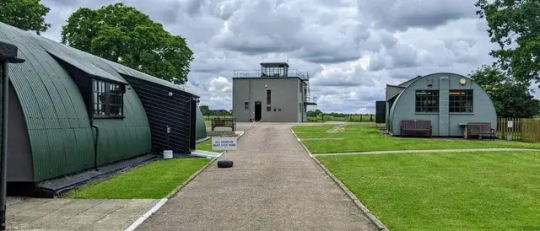
The Thorpe Abbotts Airbase/Airfield is located just outside of the village of Thorpe Abbots in Norfolk, England. It was specifically built for the 100th Bomb Group when they came to join the war effort. Flyers with the 100th were set to start arriving in June of 1943, so the engineers and builders had to even out the ground, lay miles and miles of concrete, and build the intricate roads and buildings of the base very quickly.
Many locals did not support the building of the base because it encroached on their farmlands. While the British were happy the Americans were joining the fight, there were definite feelings of animosity towards the 'yanks' (as they call Americans), but most of those faded when the Brits met the airmen who occupied the base.

Donald Miller: Masters of the Air, pgs. 1-2
"Thorpe Abbotts, an American bomber base some ninety miles north of London and a short stroll from the Norfolk hamlet that gave it its name. Station # 139, as it was officially designated, with its 3,500 fliers and support personnel, was built on a nobleman's estate lands, and the crews flew to war over furrowed fields worked by Sir Rupert Mann's tenant farmers, who lived nearby in crumbling stone cottages heated by open hearths. Thorpe Abbotts is in East Anglia, a history-haunted region of ancient farms, curving rivers, and low flat marshland. It stretches northward from the spires of Cambridge, to the high-sitting cathedral town of Norwich, and eastward to Great Yarmouth, an industrial port on the black waters of the North Sea. With its drainage ditches, wooden windmills, and sweeping fens, this low-lying slice of England brings to mind nearby Holland, just across the water. It is a haunch of land that sticks out into the sea, pointed, in the war years, like a raised hatchet at the enemy. And its drained fields made good airbases from which to strike deep into the German Reich. A century or so behind London in its pace and personality, it had been transformed by the war into one of the great battlefronts of the world, a war front unlike any other in history (Miller, 2007, pgs. 1-2)."

tag list: @ronald-speirs @footprintsinthesxnd @georgieluz @sweetxvanixlla @coco-bean-1218 @gloryofwinter
message or comment if you want to be added to the tag list! <3

#thorpe abbotts#gale cleven#john egan#masters of the air#gale buck cleven#major buck cleven#major john egan#rosie rosenthal#1940s#8th air force#mota#road to masters of the air#about masters of the air#hbo war#thorpe abbotts air base#100th bombardment group#100th bomb group#bloody hundredth#bloody hundredth bomb group
46 notes
·
View notes
Photo
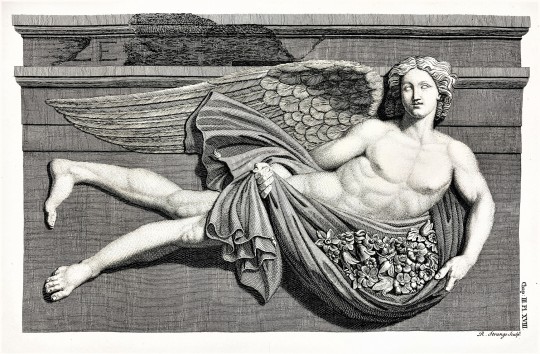
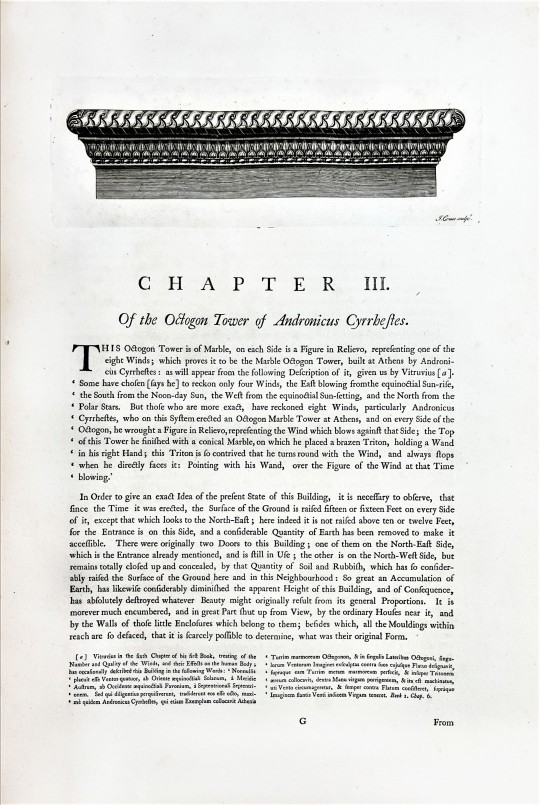




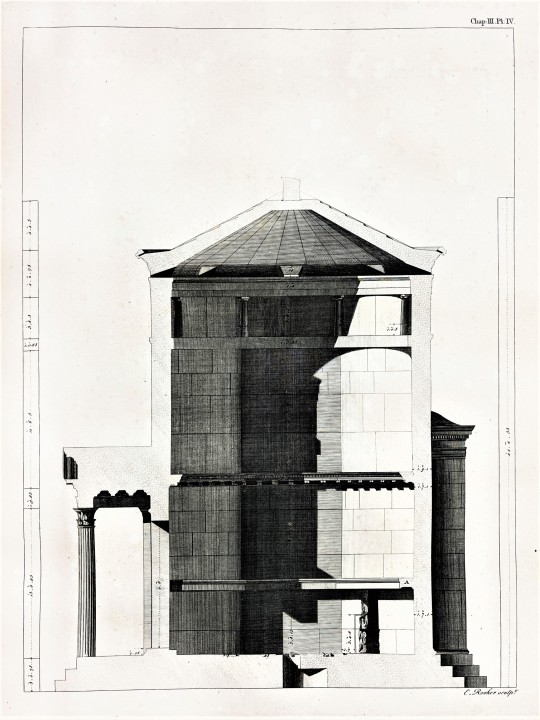
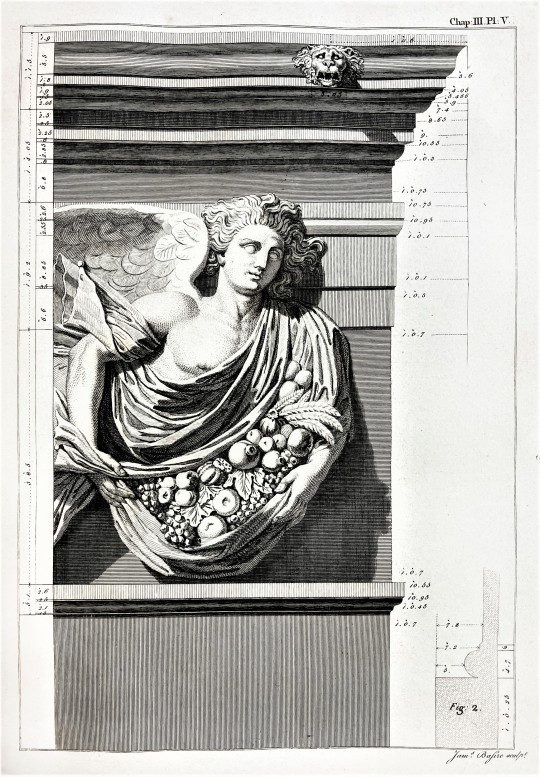


Decorative Sunday!
These beautiful engravings are from the first volume of The Antiquities of Athens by Scottish archeologist, architect and artist, James Stuart (1713-1788) and British artist and architect, Nicholas Revett (1720-1804), printed in London by John Haberkorn in 1762.
The Tower of the Winds is an octagonal marble clock tower in the Roman Agora of Athens. It was designed by Andronicus of Cyrrhus around 50 BC. It was a functional structure that contained sundials, a waterclock, and a wind vane. It is an ancient equivalent of a modern day meteorological station. The building became more widely known outside of Greece because of Stuart and Revett, who were among the first to document the antiquities and monuments of Athens in great architectural detail. Their work is noted for fueling the Greek Revival, an architectural movement in northern Europe, the United States, and Canada in the late 18th and early 19th centuries. When the first volume was published they had more than five hundred subscribers, mostly architects and builders.
The engravings were made by the British engraver James Basire (1730-1802), who specialized in prints depicting architecture. Artwork by Basire is held in museums throughout the world. He is also known for having the young William Blake (1757-1827) as an apprentice for seven years.
The well known artist William Hogarth (1697-1764) published a satirical print called The Five Orders of Periwigs in which he classifies the ridiculous wigs that were in fashion at the time into “orders” with greatly detailed measurements. This was a direct satire of Stuart and Revett’s work and similar work of which he said “It requires nor more skill to take the dimensions of a pillar or cornice, than to measure a square box.”
The tower’s frieze depicts the eight winds in bas-relief represented figuratively as gods, the Anemoi: Zephyrus, the West wind; Boreas, the North wind; Kaikias, the North East wind; Apeliotes, the East wind; Eurus, the South East wind; Notus, the South wind; Lips, the South West wind; and Sciron, the North West wind.
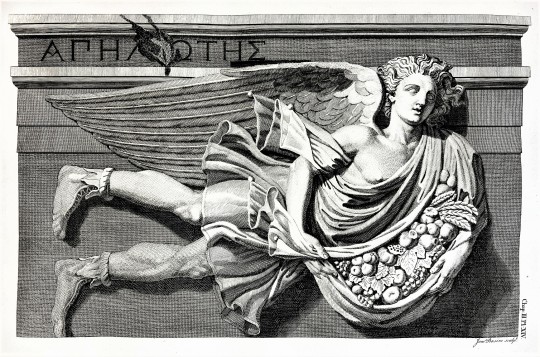
Apeliotes, The East Wind.
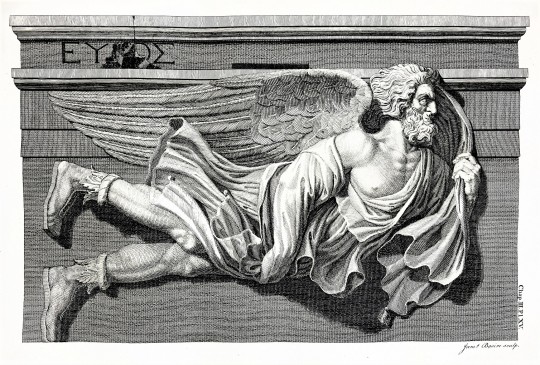
Eurus, The South East Wind.

Notos, The South Wind.

Lips, The South West Wind.

Sciron, The North West Wind.
View more Decorative Sunday posts.
-Teddy, Special Collections Graduate Intern
#Decorative Sunday#decorate plates#decorative arts#tower of the winds#athens#greek mythology#greek architecture#architecture#the antiquities of athens#james stuart#nicholas revett#James Basire#Andronicus of Cyrrhus#John Haberkorn#William hogarth#weathervanes#Engravings#18th century#greek sculpture#roman mythology#roman architecture#archeology#Teddy#Roman Agora#athens greece#Ancient Greece
105 notes
·
View notes
Photo
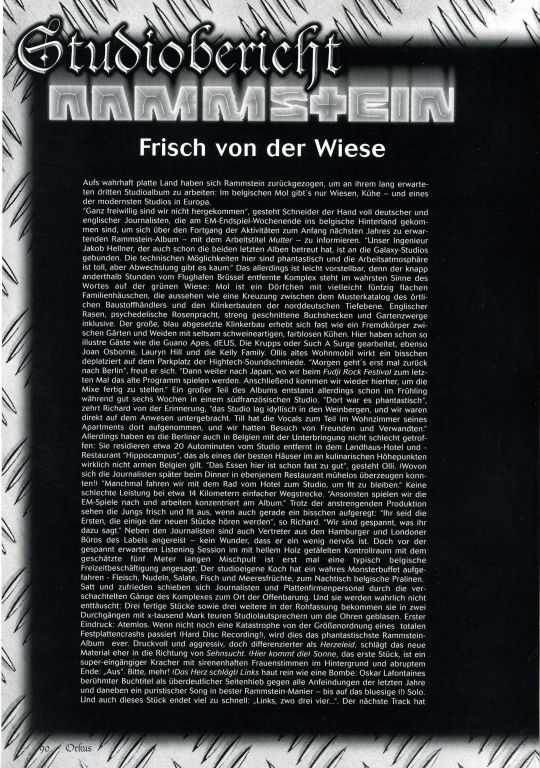
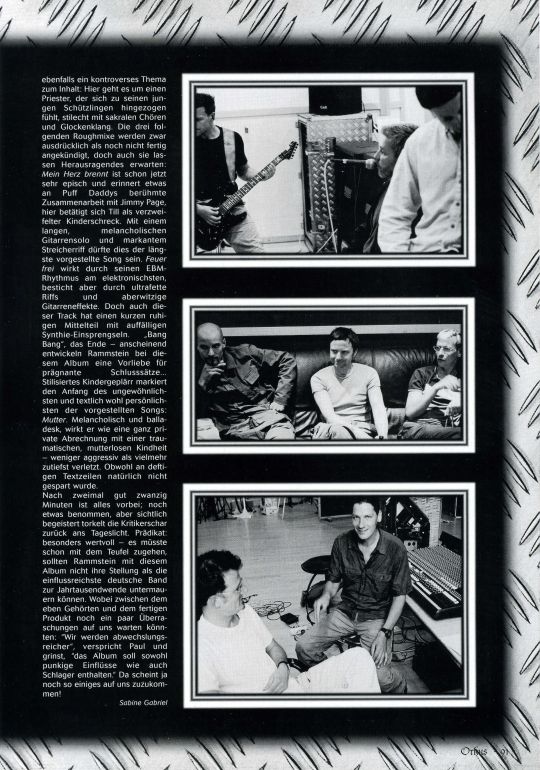
Orkus - 2000
Thank to ramjohn for the scans!
Rammstein have retreated to the truly flat country to work on their long-awaited third studio album: In Mol, Belgium, there are only meadows, cows — and one of the most modern studios in Europe.
"We didn't come here entirely voluntarily," Schneider admits to the handful of German and English journalists who came to the Belgian hinterland on the weekend of the EM final to find out about the progress of activities for the Rammstein album, working title ‘Mutter’, which is expected at the beginning of next year — to be informed. “Our engineer Jacob Hellner, who was also responsible for the last two albums, is tied to the Galaxy Studios. The technical possibilities here are fantastic and the working atmosphere is great, but there is hardly any variety.” But that's easy to imagine, because the complex, which is just under an hour and a half from Brussels Airport, is literally on a green field: Mol is a small village with maybe fifty low-rise family houses that look like a cross between the sample catalog of the local builders' merchant and the clinker brick building of the North German lowlands. English lawns, psychedelic splendor of roses, strictly trimmed boxwood and garden gnomes included. The large, blue clinker building rises almost like a foreign body between gardens and pastures with strangely pig-like, colorless cows. Illustrious guests like the Guano Apes, dEUS, Die Krupps or Such A Surge have worked here, as have Joan Osborne, Lauryn Hill and the Kelly Family. Olli's old mobile home seems a bit out of place in the parking lot of the high-tech sound company. “Tomorrow we're going back to Berlin,” he says happily. “Then on to Japan, where we will play the old program for the last time at the Fudji Rock Festival. Then we come back here to finish the mixes.” However, a large part of the album was created in the spring for a good six weeks in a studio in the south of France. "It was fantastic there," Richard recalls, "the studio was idyllically situated in the vineyards, and we were accommodated directly on the property. Till recorded part of the vocals in the living room of his apartment there and we had friends and relatives visiting.” Admittedly, the Berliners didn't do badly with the accommodation in Belgium either: They reside about 20 minutes by car from the studio in the country, house hotel and restaurant 'Hippocampus', which is one of the best in Belgium, which really has a lot of culinary highlights is applicable. "The food here is almost too good," admits Olli. (Which the journalists were able to easily convince themselves of later at dinner in the same restaurant!) “Sometimes we cycle from the hotel to the studio to stay fit.” Not a bad performance at around 14 kilometers one-way.
“Otherwise we replay the EM games and work concentrated on the album.” Despite the grueling production, the guys look fresh and fit, if just a little bit excited: “You're the first to hear some of the new tracks,” says Richard. “We are curious to see what you have to say about it.” In addition to the journalists, representatives from the label's Hamburg and London offices have also arrived — no wonder he's a little nervous. But before the eagerly awaited listening session in the light-wood paneled control room with the estimated five meter long mixing console, a typically Belgian pastime is the order of the day: the studio's own chef has set up a veritable monster buffet — meat, pasta, salads, fish and seafood, for dessert: Belgian chocolates. Fed up and satisfied, journalists and record company staff push their way through the complex's complex corridors to the place of revelation. And they certainly won't be disappointed: three finished pieces and three more in the raw version are blown around their ears in two rounds with studio loudspeakers costing x thousand marks. First impression: breathless. Barring another catastrophe of the magnitude of a total hard disk crash (Hard Disc Recording!), this will be the most fantastic Rammstein album ever. Powerful and aggressive, yet more differentiated than Herzeleid, the new material leans more in the direction of Sehnsucht. ‘Sonne’, the first track, is a super-catchy banger with siren-like female voices in the background and an abrupt end: «Aus». More please! ‘Links’ hits like a bomb: Oskar Lafontaine's famous book title as an obvious dig at all the hostilities of recent years and next to it a puristic song in the best Rammstein manner - except for the bluesy (!) solo. And this piece also ends far too quickly: 'Left, two three four...'. The next track also has a controversial subject: this is about a priest who feels attracted to his young protégés, in proper style with sacred choirs and bells. The three following rough mixes are announced as not yet finished, but they also promise something outstanding: ‘Mein Herz brennt’ is already very epic and reminds a bit of Puff Dandy's famous collaboration with Jimmy Page, here Till acts as a desperate children's fright. With a long, melancholic guitar solo and distinctive string riff, this might be the longest song presented. ‘Feuer frei’ seems the most electronic with its EBM rhythm, but impresses with ultra-fat riffs and crazy guitar effects. But this track also has a short, quiet middle part with noticeable synth sprinklings. "Bang Bang", the end - Rammstein seem to develop a preference for concise closing sentences on this album... Stylized children's babble marks the beginning of the most unusual and lyrically most personal of the songs presented: ‘Mutter’. Melancholic and balladesque, it comes across as a private reckoning with a traumatic, motherless childhood — less aggressive than deeply hurt. Although of course no savings were made on hearty lines of text.
After twice a good twenty minutes it's all over; Still a little dazed, but visibly enthusiastic, the crowd of critics staggers back to the surface. Predicate: particularly valuable — it would have to be hell if Rammstein weren't able to underpin their position as the most influential German band at the turn of the millennium with this album. Although there could still be a few surprises waiting for us between what we have just heard and the finished product: “We will be more varied,” promises Paul and grins, “the album should contain both punk influences and hits.” There still seems to be a lot to come!
#Rammstein#Till Lindemann#Paul Landers#Oliver Riedel#Christoph Schneider#Flake#Richard Kruspe#2000#*scans#*#that photo of Till ❤️
74 notes
·
View notes
Text
The engines as different basis (EoSR but built different) - 1
(Tender engines as tank engines, vice versa)
From No. 1 - 6 (Thomas, Edward, Emily, Henry, Gordon, James)
NWR 1 Thomas (formerly LBSCR 307, SR 2307)

Class: London, Brighton, and South Coast Railway (LBSCR) Class C3 Horsham Goods
Previous Owners: London, Brighton, and South Coast Railway; Southern Railway; British Railways (Southern Region)
Built: August 1906
Real-life Withdrawal: May 1949 (never received a BR number)
Designer: Douglas Earle Marsh
Builder: Brighton Works
Bio:
Thomas is the first tender engine purchased by the NWR, after the withdrawals of the original NWR 1 - 6 (the last one being in 1925). The NWR had believed that they wouldn't need any tender engine power until the withdrawal of NWR 1 in 1925.
NWR 2 Edward (formerly W&SR 5)

Class: Dublin, Wicklow and Wexford Railway (DW&WR) 52 class; North Western Railway (NWR) Class S-W52
Previous Owners: Wellsworth & Suddery Railway
Built: 1893
Real-life Withdrawal: n/a
Designer: William Wakefield
Builder: Sharp, Stewart and Company (Glasgow, Scotland)
Bio:
Edward was commissioned by the Wellsworth and Suddery Railway. His design was altered so that he could run on standard gauge rails. When the merger occured, he was passed down to the NWR, along with Emily, and the NWR attempted to rebuild him so he could handle the new jobs. This did not work out, resulting in Edward having poor steaming issues. He was swapped with Emily, working lighter and fewer jobs.
NWR 3 Emily (formerly GNR 1009 and W&SR 6)
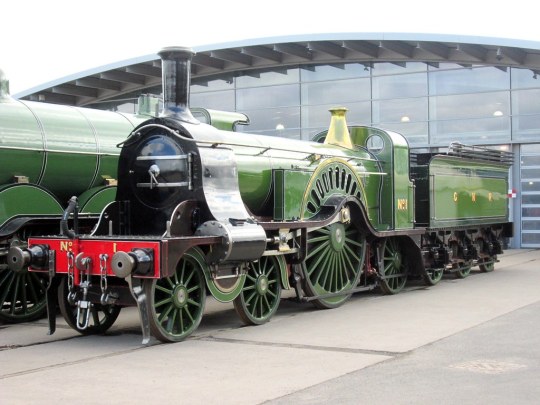


Class: Great Northern Railway (GNR) Class H1 Stirling Tank; North Western Railway (NWR) Class S-S1 Stirling Tank
Basis (Inspiration): GNR Stirling Single A3, GNR G1, and B&ER 4-2-4 tank engines
Previous Owners: Great Northern Railway; Wellsworth and Suddery Railway
Built: 1882
Real-life Withdrawal: n/a
Designer: Patrick Stirling
Builder: Doncaster Works
Bio:
Emily is an experimental tank engine version of the GNR A1, A2, and A3 Stirling Singles, with a wheel config of 4-2-4T. While she did perform decently, she did not perform as they expected so she was withdrawn. The Wellsworth and Suddery Railway took interest in Emily. They purchased her from the GNR before she could be sold to a scrapyard. She worked welled on the W&SR, able to be passed down to the NWR in 1915, along with Edward. She ended up replacing Edward on the express passenger service when the latter's rebuilds proved to worsen his performance.
NWR 4 Henry




Class: North Eastern Railway (NER) Class F; North Western Railway (NWR) Class S-S5 (4-6-4T) Black Five Tank
Basis (Inspiration): NER Class D (pre-1935); LNER Class A2 (pre-1935); LMS Class 5MT Black Fives (post-1935); LMS 4MT 2-6-4T (two-cylinder) (post-1935)
Previous Owners: Unknown
Built: 1920
Real-life Withdrawal: n/a
Designer: Vincent Raven; Henry Stanier
Builder: Unknown
Bio:
Henry was built from stolen duplicates of Vincent Raven's plans of a 4-6-2T, which were derived from the NER Class D (4-4-4T). Unfortunately, these duplicate plans were the discarded designs due to uneven weights on the chassis and the use of a Schmidt boiler. He was under-powered and a hazard to operate. Sir Louis Topham Hatt I was swindled to buy Henry in 1922 when promised that Henry would be the next best thing for railways. This was when the NWR believed that they wouldn't need tender engines to run the railway. After the Flying Kipper crash, Henry was rebuilt into a new class of his own, the LMS Class 5MT Black Five Tank.
NWR 5 Gordon
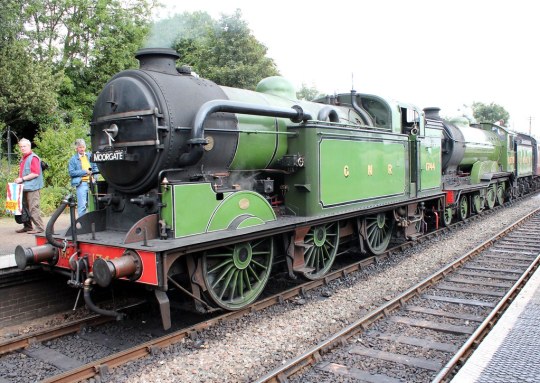
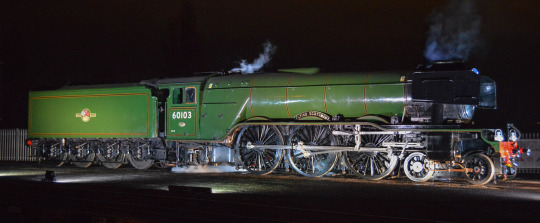
Class: Great Northern Railway (GNR) Class B1; North Western Railway (NWR) Class S-G1
Basis (Inspiration): GNR Gresley Class A1, GNR Gresley Class A3, and GNR Gresley Class N2
Previous Owners: Great Northern Railway
Built: 1920 - 1923
Real-life Withdrawal: n/a
Designer: Nigel Gresley
Builder: Doncaster Works
Bio:
Gordon is an experimental tank version of the GNR Gresley A1s, in hopes of surpassing the capabilities of the Gresley N2s. This did not work out but served as a basis for the LNER V1s. He was sold off to the NWR, replacing Emily on heavy passenger duty, which was the express service for the NWR.
NWR 6 James (formerly L&YR 506, LMS 11546)

Class: Lancashire and Yorkshire Railway (L&YR) Class 24; NWR Class S-A25
Previous Owners: L&YR, LNWR, LMS
Built: 1919
Real-life Withdrawal: 1959 (BR number would've been 51546)
Designer: John Audley Frederick Aspinall
Builder: Horwich Works
Bio:
James was bought as he was originally built in 1925. However, Sir Bertram Topham Hatt II ordered for James to be rebuilt into a 2-6-2T. This took well over a few months until they finally came up with a decent design. Unfortunately, James' great performance came at the cost of James' loosing his memories.
#eosr but built different#ttte thomas#ttte edward#ttte emily#ttte henry#ttte gordon#ttte james#her train of thoughts#''what if'' AUs are so fun#ttte#ttte au#cerenemuxse
10 notes
·
View notes
Text







James Dodds (b 1957, British)
"Once a shipwright, Dodds’ paintings illustrate the anatomy of boats, revealing the materials and curves that underwrite the finished vessel, this aspect of his work is explored in Emily Harris’ film for Classic Yacht TV, ‘Shaped by the Sea’, which draws many parallels between the art of the boat builder and the painter of boats.
Yet his paintings go beyond retracing the shipwright’s logic. Rich in colour, tone and texture, they move beyond the literal and evoke sailing’s mythic and historic dimensions. Ethereal in light and tone, paintings of restored boats evoke a lifetime at sea, unearthing the layers of memory that shroud every vessel.
Ancestral lines also resurface in the artist’s new work. Following recent trips to Norfolk and Denmark, Dodds sheds new light on historic North Sea crossings, contending that all clinker-built boats around the British coastline derive from Viking vessels.
As Ian Collins writes: “[Dodds’] life and work are forever immersed in the spirit and spectacle of the sea.” Born in Brightlingsea, Dodds has built his studio a few miles upstream in Wivenhoe, in what was once a great boatyard on the River Colne. Before enrolling in the Royal College of Art he worked as a shipwright, rebuilding Thames barges on Britain’s east coast."
23 notes
·
View notes
Text
BOOK REVIEW - Brick by Brick: How We Build a World Without Prisons by Cradle Community
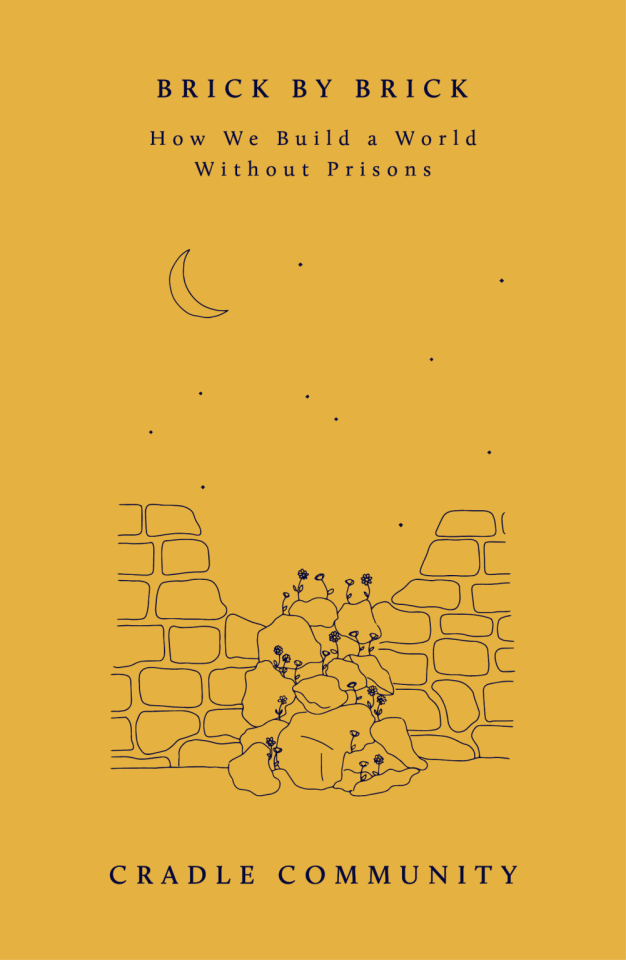
This is a difficult book to write about.
It difficult because I'm writing about topics I've barely learned about. Brick by Brick is by Cradle Community, a collective of organisers whose goal is to educate about prison abolition and transformative justice. And whilst the book is emotionally affecting and presents clear arguments, it really only feels like a first step to understanding and implementing a system of justice free of prisons.
Which it's meant to be! Brick by Brick presents the arguments for prison abolition, and it does it in a wholly effective way, using emotional stories to tug at the heartstrings and giving you the vocabulary and talking points to argue against the status quo. But it doesn't have the data to back it up. Without hard evidence, it's a lot of anecdotal evidence designed to appeal to the reader's emotions.
It presents a lot of facts which are, on the face of it, difficult to argue with: that prisons are places of isolation and punishment which rarely, if ever, give those inside the tools to reform and reintegrate, at best using them as a source of cheap labour. This doesn't touch on the legacy of imperialism inherent in the British prison system, or the close ties between immigration and the justice system, or that police who commit crimes are often protected by their colleagues closing ranks and thus don't see the justice that they purport to uphold. This is all discussed within the first half of the book, along with myriad other ways in which the criminal justice system fails the people it is supposed to protect, and fails the people it incarcerates too. Frankly, I think my first issue with the book is that it spends a lot of time saying why prisons are bad. I understand - it gives us talking points for every facet of the argument, from the racial (the lengthy history people of colour's disproportionate persecution at the hands of the justice system, compared to relatively lighter or even non-existent sentences for white people) to the environmental (that prisons are often built on waste ground which is not safe for those living or working there, and little thought is put into them by the builders of proper ventilation, clean water, or prisoner health in general). But it also doesn't help the problem feel any more surmountable - prisons are not permanent structures, much though they feel that way, but they feel as permanent as capitalism and the two-party system.
The latter half of the book - parts 3 to 5 - are all about how we look at and begin to build a world without prisons. It should come as no surprise that it's all fairly similar: the ultimate solution is community-building and grassroots organisation, acting together to fight the construction of new prisons, to provide security of food and shelter for people, and to protest against the state violence the puts people in prison in the first place. It's such a simple step, and an admirable one, but it's one I struggle with as a person who has difficulty speaking to new people and making friends (perhaps I'll pick up a book about it). And - to heap another criticism upon the pile - the community initiatives Brick by Brick highlights are, for the most part, based in London or the South of England, with little focus on the North or initiatives in the wider UK (with one environmental group highlighted in Scotland). It's understandable to some extent - many of these prisons and justice systems have headquarters centralised in London - but it's also disheartening as someone who lives in the north that there is little focus on activism and solidarity outside of the Capital.
But as far as prison abolition goes, Brick by Brick is a good start. Whilst I wouldn't recommend it in a vacuum, with other resources and some research to find local anti-prison initiatives it's a solid starting point which provides a breadth of talking points to get you arguing for abolition. I'd recommend it for it's "suggested reading" page, which provides enough resources on transformative justice to back up the anecdotes in the book. Overall, whilst I might be down on it for being more propagandistic than evidence-based, as I'd hoped, as an introductory text it's a good place to begin, and it gives you enough material to look for activist groups and read up further on transformative justice in your own time.
#book review#transformative justice#prison abolition#Brick by Brick#Cradle Community#Year of Learning#Community Building#nonfiction
4 notes
·
View notes